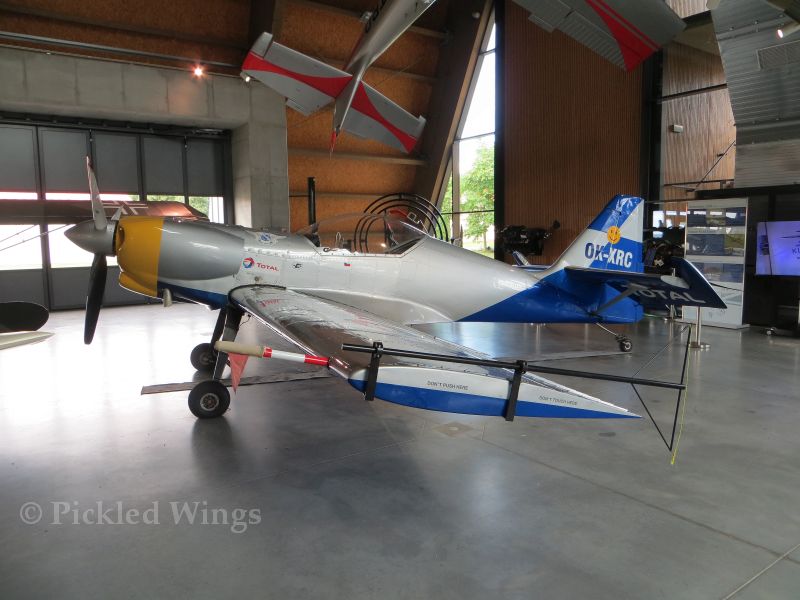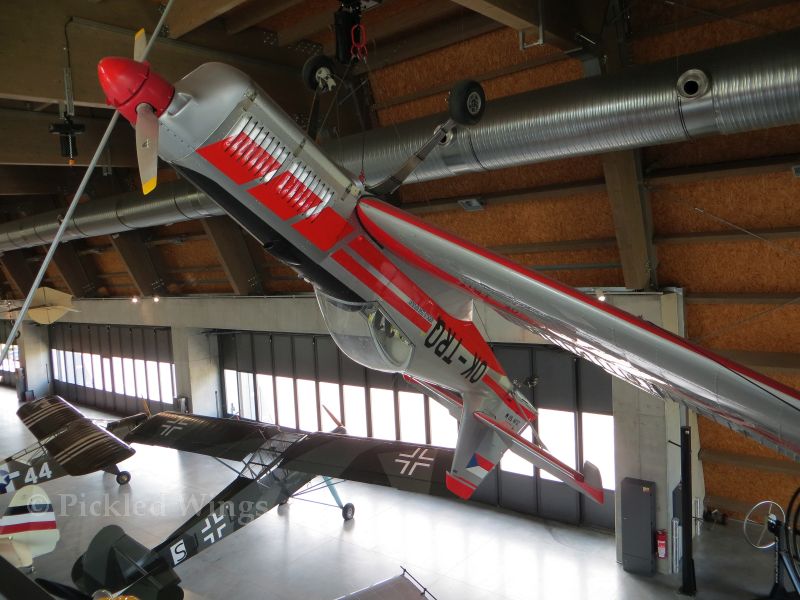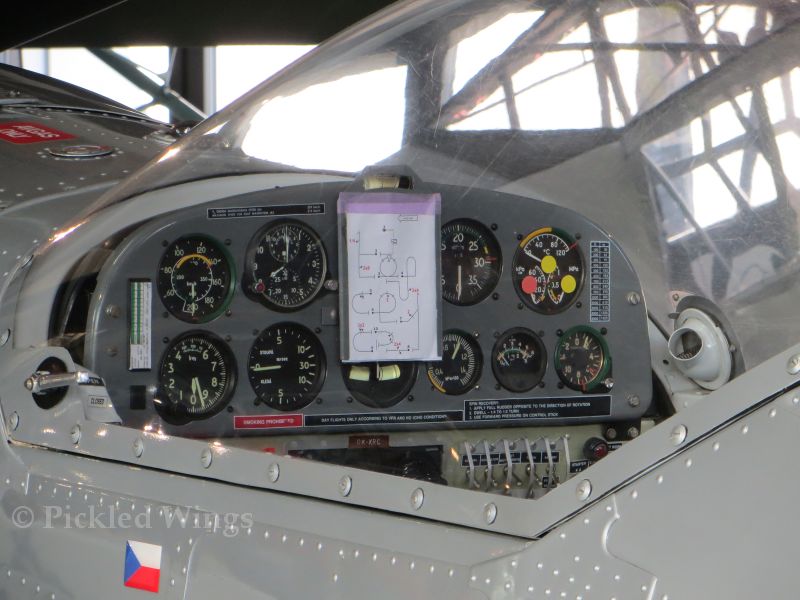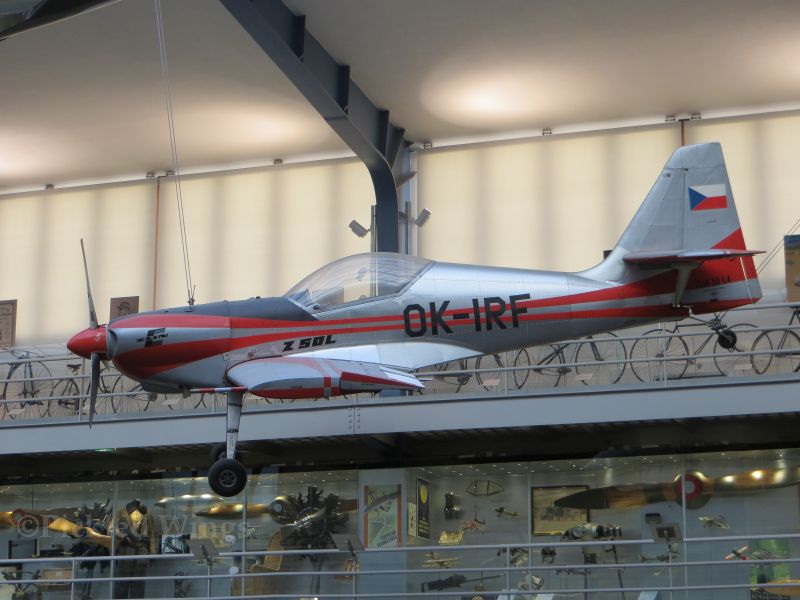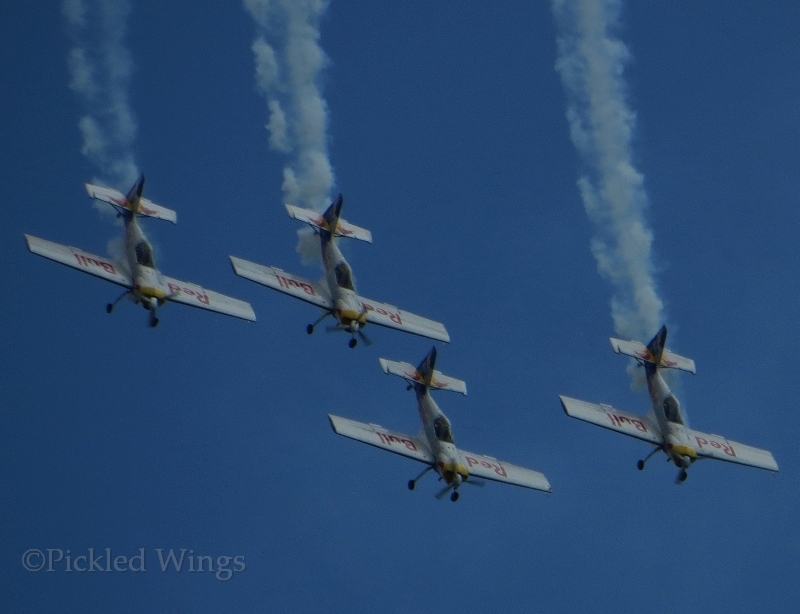A Torch to Pass
Through the 1960s and early 1970s, international aerobatics competitions were largely ruled by successive members of the Zlín Trenér family of aircraft from Czechoslovakia. To this day; aircraft of this line remain popular for general aerobatics, training, glider tug and general aviation duties.
Zlín, at the government’s request, set about designing an all new aerobatics machine in the early 1970s that could carry on the winning tradition of the Tréner line before it. The new aircraft, which flew for the first time in 1975, was designated the Z-50 and it would spend the next decade or so successfully defending the company’s reputation in world class aerobatic competition.
The Z-50 made its competition debut at the 1976 World Aerobatic Championships and Czechoslovak pilots placed a very respectable third in solo competition and second in the team category. At the next championships in 1978, Czechoslovak flown Z-50s took first and third place in the solo category with a German flown Z-50 taking fourth place and Czechoslovakia winning the team competition.
The 1980 and 1982 World Aerobatic Championships were not so successful for the Z-50 pilots; however, Czechoslovak Z-50 pilots returned to winning form to take the 1984 and 1986 editions of the competition.
As it had been for the Tréner series of aircraft before them, the Z-50’s primary competition in aerobatics came from Yakovlev built machines.
The Z-50 was significant not just in competition; technologically, it represented a large change in aerobatic aircraft design methods and philosophies. Computers were used in refining and optimizing the design with great care being taken to ensure that the aircraft could meet the stringent requirements of international competition standards which included, among other requirements, that the aircraft be able to have a usable life span of 1,000 flight hours of demanding aerobatics.
The Zlín Z-50 story is one of passion, determination and pride. A skilled team took the aircraft from concept to first flight in a remarkably short two years. The end result was not only a winning machine, but also the world’s first serial produced aerobatics aircraft.
Hurdles to Clear
In spite of its relatively short developmental period, the designers of the Z-50 had a number of technical obstacles to overcome in order for the aircraft to be of world class competition quality.
The first hurdle was the question of how to power the Z-50. Unlike the Tréner, which had a Czech designed and built engine, there was no appropriate class of engine for the Z-50 available from domestic sources. Ultimately, a six cylinder engine from the American manufacturer Lycoming was chosen for the Z-50 and an “L” was placed in the name to reflect that.
The design team also had to strike a balance between airframe strength and saving weight. The Z-50 was of primarily metal construction for strength, but was designed to be dismantled into a few large components to save weight. The wing was built as a full span unit which the fuselage could be attached to by screws; the benefits of this type of wing design included the strength of a continuous wing spar, a reduction in materials used which translated into reduced weight and reduced time required for assembly and dis-assembly of the aircraft.
The weight savings continued in the design of the main landing gear legs which were made of a single, continuous strip of titanium. As with the wing, this resulted in a reduction of construction materials and assembly time.
Other design aspects of the Z-50 included the omission of landing flaps from the wings in favour of two part ailerons on each wing which covered the full wingspan and gave the aircraft an astounding rate of roll as well as a one piece cockpit canopy which gave the pilot an excellent all round view.
Dynasties in Parallel
From the inaugural World Aerobatic Championship competition in 1960 until the mid 1980s, the aircraft of the Zlín and Yakovlev companies were dominant forces. The various members of the Tréner series competed against various incarnations of the Yak-18 while the Z-50 found its contemporary in the Yak-50. With a very few exceptions across those two and a half decades, the championship was taken by either Zlín or Yakovlev machines.
While the Tréner and Yak-18 had much in common, primarily that they both started as training aircraft that had been reworked to bring their aerobatic qualities to the fore; the Z-50 and Yak-50 were very different beasts in every regard.
The Yak-50 was developed from the Yak-18 while the Z-50 was a clean sheet design bearing no design commonalities with its own forbear. As such, the Z-50 was a much more refined and modern aircraft in design than its Yakovlev counterpart and benefited from contemporary design philosophies and trends in a way the Yak-50 could not. In fact, after a series of accidents, the Yak-50 required a wing spar strengthening program to keep it not only competitive but airworthy at all.
Perhaps fittingly, Zlín and Yakovlev faded from top tier international aerobatics competition in the same manner they had entered: together. With the debut of The Sukhoi Su-26 from Russia and the French made Mudry CAP 230 in the mid and late 1980s, the writing was on the wall for Z-50, Yak-50 and their respective manufacturers as far as top level world aerobatic supremacy was concerned.
The “Fifty” Family
The Z-50, by virtue of being a serial produced aircraft, has its own pedigree that is worth a look. The “Fifty”, as many pilots refer to it, was built in five major variations over a span of nearly 20 years when production ended in the mid 1990s:
Z-50L
This was the first production version and fitted with a 260 horsepower Lycoming engine. 25 were made and several were converted to later LA and LS configurations.
Z-50LA
Upgraded variant introduced in 1980, most were converted from L versions.
Z-50LS
A more powerful variation, fitted with a 300 horsepower engine, introduced in 1982. over 30 of the LS version were built, several were conversions from earlier variants.
Z-50M
A total of five aircraft were made to the M standard. The M had a Czech made engine of 180 horsepower and was intended to replace the aging Z-526 Tréner version.
Z-50LX
The final variant of the family debuted in 1991. It was optimized for airshow performance and was fitted with additional internal fuel tanks as well as a smoke generating system.
The Show Goes On
Though its top tier competition days are well behind it, the Z-50 is still a very active flyer at the time of writing. Several of the type are active on flying registers around the world and can be found on aircraft sales websites.
It is still appreciated for its excellent aerobatics qualities and remains popular in some levels of competition, general aerobatics flying and airshow performances.
The Z-50 still has plenty to give as an exciting performer and doesn’t look set to have its wings permanently clipped anytime soon.
The following articles from 2019 and 2020 will give you a good overview of the Z-50 and what it’s like to fly.
